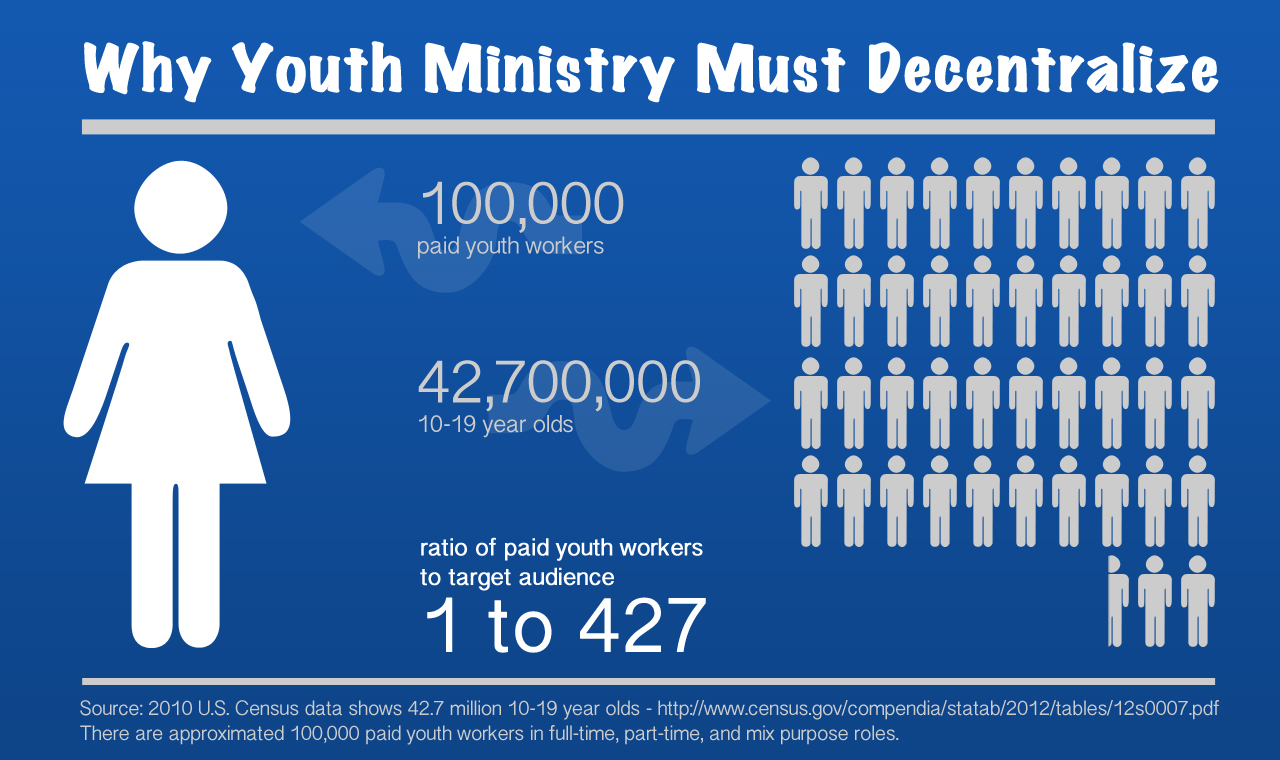
Click here to view or download full-sized version
Source: U.S. Census Data
Challenge
You cannot reach 427 10-19 year olds with 1 paid youth worker. We have 40 years of data which tells us this is impossible. The way we currently do things is part of the solution but we must think differently to engage more of our societies 10-19 year olds.
We must decentralize our role, invite more adults who minister to teenagers already to the table, and multiply our effectiveness.
The cause of Christ is too important to continue on with another 40 years like this.
My invitation to you is simple: Join us. Help us innovate contextual means for decentralizing our role and impacting more 10-19 year olds. I am not alone, there are thousands who think like me. Together we can write a new story of youth ministry.
Ready to dream about your ministry, again? (Instead of just surviving.) Join us next week at The Summit.

Leave a Reply